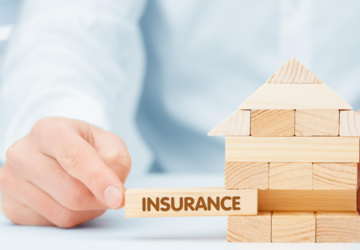Just because you’ve set up your shop doesn’t mean people will automatically come flooding in. It would be awesome if it was a simulation game, but sadly it is not. If you want people to take notice of you, you need to make sure you’re sending them the appropriate signals at the right moments. To get people’s attention, all you need is a visually arresting sign in the right spot. But what are the most crucial aspects of putting up signage for a business?
Storefront signs
The complexity of a store’s window display is not limited to its contents.
Large, long-lasting signs in front of stores are common to ensure that customers can always find you and recognize your brand.
Any store that wants to draw in customers and up its sales should prioritize its signage. Inviting customers in and informing them about your wares can be done quickly and easily with well-designed signage.
However, if the signage isn’t done right, it might be overwhelming for guests. Signage on your building and storefront needs just as much care as the layout of your website.
Here, you’ll learn about the importance of signage in business, the different kinds of signs, and some tips for creating your signs.
Why do signs take time?
There is no standard size for custom signage because they are all manufactured to order for each customer. Due to the high stakes involved, you want it to represent your firm in the best possible light. High-quality signs require careful attention to detail, which is heavily influenced by the specifics of the sign being created.
What kind of signs does your business need?
The most crucial types of signals for a company are:
- Issues of Safety
- Regulation
- Education
- Publicity and Direction Finding
- Homage to the dead
Supplying your complete organization with what it needs will likely need multiples of each type. In the end, that can add up to a lot of different outcomes. So, it’s crucial to focus on the particulars.
Keep all of this in mind. Employees and customers alike may experience frustration as a result of a lack of signage. Long-term, this might result in fewer sales and a loss of revenue.
If clients notice your business is missing a sign, they may have an unfavorable opinion of your company.
You may avoid this by keeping track of your requirements. That’s why it’s smart to make a comprehensive inventory of everything you’ll need. Work through the checklist items one by one and cross them off as you go.
Researching the various types of signs used by businesses that are comparable to the one being established may help in the creation of a more efficient list. When choosing advertisements, this is very crucial. Think about where you are, what you’re going through, and how much money you have before making any decisions.
However, you’ll have to use many structures. Many businesses use a mix of building signs and other sorts of advertising, including banners, to promote their wares.
Building signs
Putting up signage on buildings is another great way to get the word out about your company. They may assist motorists and pedestrians recognize your presence.
It’s self-evident that there are several applications for it. If consumers have a hard time finding your establishment, this might be helpful.
Look into these possibilities for building signs:
- Cryptographic Messages
- Dishes made of acrylate and metal
- Cabinets with built-in lighting
- Contrasting extremely dissimilar alphabets
Mount them prominently over the shop’s front glass. That ensures that it can be read by everyone.
Windows and doors
Next, let’s head up to the store’s second floor. The doors and windows will be our main focus as they are the means of escape.
- Displaying signs might help customers notice your business’s location. Depending on the design of your windows, you may want to place your business’s contact details there.
- Don’t forget to tell them if your establishment is currently open for business. You could, for example, use a sign that you can flip over and display at the top of the door. Your store’s hours must also be prominently displayed.
- A set of rules, such as “no dogs permitted in the store,” must also be posted here. Although it shouldn’t be the center of focus, this should be noticed.
- Keep in mind that not just posters but also banners and window clings can serve as ads here. There is no better place to advertise discounts and new items for sale.
Restroom sign
The signs need to be hung right next to the restroom doors. These signs work best when hung at or near eye level, where they may be easily read by customers and staff alike.
Make sure there is clear signage throughout the building or storefront that points consumers in the direction of the bathrooms. When sailing, these markers are a must-have. Customers aren’t interested in a treasure hunt from you.
Another possibility to think about is posting signs that explain how to behave in the toilet. Place a sign on the inside of the stall door to remind people to flush the toilet, for example. You should put any more reminders in obvious places like the sinks or hand drier.
These kinds of signs can make everyone’s daily lives easier.
To inform customers of which sections are accessible to individuals with disabilities, you should use public symbols like accessibility signage.
Pros of installing the storefront sign yourself
- Installing them on your own is less invasive.
- You will be able to save the amount of money that will be invested in hiring someone to add the sign to your storefront.
- This will give you the experience for future work.
Cons of installing the storefront sign yourself
- Installing the storefront sign yourself can be considered harmful since it can put you in danger of falling.
- This will cause some minor measurement problems.
- You may fail to install it in the right way which may damage the sign and it will be a loss for your business.
If you have any questions or need any information contact the best sign company in Chicago.








